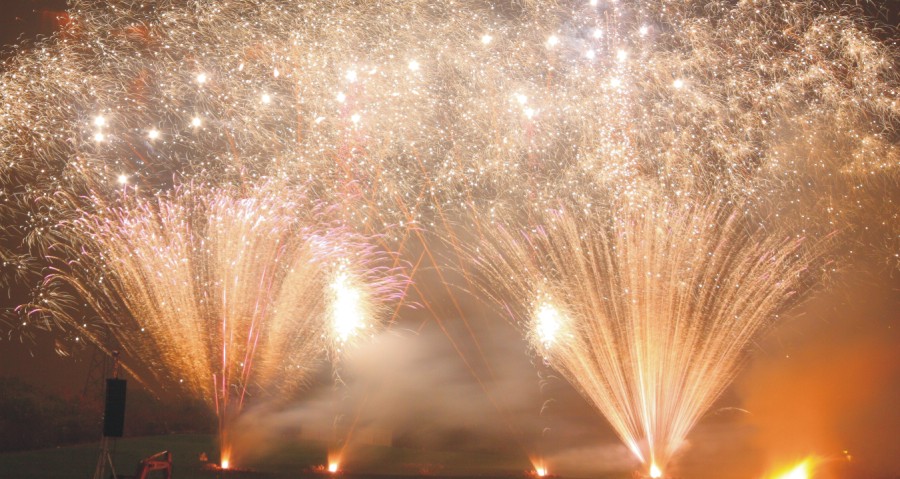General information about Firework Effects
General info: most of the firework types listed – especially shells, roman candles, cakes and mines – can contain versions of the same or similar effects. It’s by combining these effects and firework types that we can design magical sequences, which in turn build magical displays. There are dozens of types of effects available so this list is not exhaustive, but it will give you an introduction to some of the most common types.
Firework Effects
Crossettes: a star, with or without a tail, which is designed to split into four at the peak of its trajectory. These can also be colour-changing so that a rising red star can become 4 blue stars when it splits. Pastel shades are popular and crossettes are suitable for most quiet firework venues as they split gently rather than bursting apart noisily. They can be found in shells, roman candles, cakes and mines.
Horsetail: as the name suggests this effect resembles a horse’s tail – or a waterfall. This is a graceful, quiet effect that looks stunning when fired in multiples. This effect is usually found in soft break shells and cakes.
Willow: similar to the horsetail effect in that they are soft breaking, but willows produce a bigger, rounder burst resembling a willow tree. This effect requires a large firing site because the gently falling stars stay alight for a long duration, and they can reach the ground still burning.
Tourbillion: sometimes known as a butterfly, serpent or spinner this effect can produce slightly erratic flight due to their unbalanced design. They look like small spinning fountains and we see them used in shells, roman candles, cakes, mines and single shots.
Timed Rain: a noise effect generally found in cakes and shells. In most cases a star will rise and burst invisibly and produce a large cloud of crackles. This is especially effective in fanned cakes as it seems to suddenly fill the sky with crackling flowers. The colour of the crackle can vary from a mid gold to a silvery white almost “dandelion” effect.
Pistil: the centre or core of a shell burst. This is more often than not a different colour to the shell burst itself and the pistil stars can be made in a number of styles and effects, such as colour-changing and horsetail pistils. Pistils are common in peony sehlls where they help fill out the centre of the effect.
Patterns: generally only found in mid to large calibre shells, pattern effects use the intricate placement of stars around the bursting charge to create firework shapes such as rings, jellyfish, cubes and even smiley faces. The most common pattern effect for a wedding fireworks display is a heart shell.









